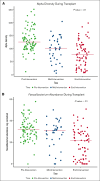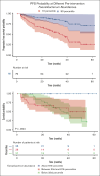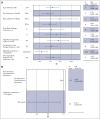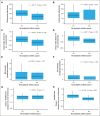Gut Faecalibacterium abundance in patients with plasma cell disorders is associated with survival after autologous HSCT
- PMID: 40735351
- PMCID: PMC12304682
- DOI: 10.1016/j.bneo.2025.100114
Gut Faecalibacterium abundance in patients with plasma cell disorders is associated with survival after autologous HSCT
Abstract
The gut microbiota (GM) has been linked to the development, progression, and response to therapy in plasma cell neoplasms (PCNs). The primary goal of this study was to investigate the relationship between the composition of the GM before and during autologous hematopoietic stem cell transplant (HSCT) with clinical outcomes of patients with PCNs. We focused on the genus Faecalibacterium, which includes the most abundant anaerobic commensal bacterium in the GM. Fecal samples were collected prospectively before, mid (at 1 week from the start of intervention), and end (at engraftment) of intervention (liberalized vs neutropenic diet) and subjected to 16S ribosomal DNA sequencing. Eighty-three patients were enrolled. Their median age was 64 (range, 31-79) years. Fifty-four patients received HSCT as part of frontline therapy and 29 for relapsed/refractory disease. With median follow-up time for survivors (n = 82) of 32 (range, 0.7-61) months, the median progression-free survival (PFS) was 40 months. Higher preintervention Faecalibacterium abundance was associated with improved PFS (hazard ratio [HR], 0.92; 95% confidence interval [CI], 0.86-0.99; P = .02). Faecalibacterium abundance was found to decrease early after transplant (P < .01). Although the administration of high-dose melphalan (200 mg/m2) was significantly associated with PFS in both univariable (HR, 0.38, 95% CI, 0.19-0.75; P = .006) and multivariable (HR, 0.42; 95% CI, 0.20-0.87; P = .02) analyses, preintervention Faecalibacterium abundance remained independently associated with PFS (HR, 0.93; 95% CI, 0.86-0.99; P = .04) on multivariable analysis. In conclusion, lower preintervention Faecalibacterium abundance was associated with inferior PFS.
© 2025 American Society of Hematology. Published by Elsevier Inc. Licensed under Creative Commons Attribution-NonCommercial-NoDerivatives 4.0 International (CC BY-NC-ND 4.0), permitting only noncommercial, nonderivative use with attribution. All other rights reserved.
Conflict of interest statement
Conflict-of-interest disclosure: J.R.W. has financial interests (consultancy) in Cidara, Celgene, F2G, Orca, and Takeda, none are related to the subject of this article. The remaining authors declare no competing financial interests.
Figures






References
-
- Murthy HS, Gharaibeh RZ, Al-Mansour Z, et al. Baseline gut microbiota composition is associated with major infections early after hematopoietic cell transplantation. Biol Blood Marrow Transplant. 2020;26(11):2001–2010. - PubMed
Publication types
LinkOut - more resources
Full Text Sources

